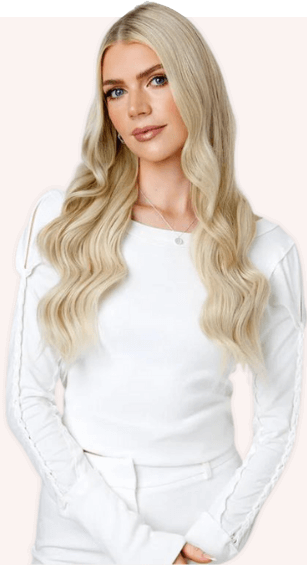Hair extensions have become a popular solution for those seeking to add length, volume, or even just a splash of color to their locks. However, with the myriad of options available in the market, it’s crucial to prioritize the health of your natural hair. Nobody wants to sacrifice their hair’s well-being for a temporary style boost. That’s where the concept of “least damaging hair extensions” comes into play. In this guide, we’ll delve into the realm of hair extensions and provide valuable insights on selecting the least damaging option for your hair type and lifestyle.
I. How Are Improper Hair Extensions Damaging Your Natural Hair?
Choosing improper hair extensions can lead to various consequences. Low-quality extensions or incorrect attachment methods can damage your natural hair. Here are some ways that hair extensions can potentially damage your natural hair:
1. Hair Breakage
Extensions, particularly when improperly installed or maintained, can cause breakage in your natural hair. The added weight of the extensions, combined with friction from brushing, styling, or sleeping, can weaken your hair strands and lead to breakage. Besides, low-quality hair extensions may be rough in texture and prone to tangling. The friction and pulling associated with detangling these extensions can cause damage, resulting in breakage and split ends.
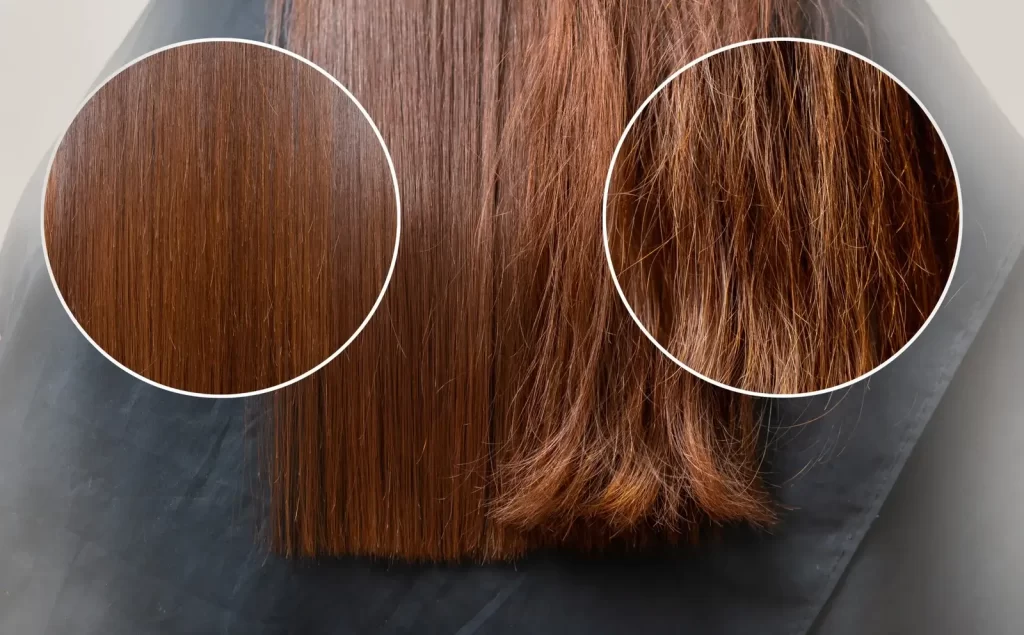
CHECK THIS OUT: Hair Breakage Causes & How To Stop Hair Breakage
2. Thinning
Extensions can contribute to hair thinning, especially if they are applied repeatedly over time without allowing your natural hair to rest and recover. The strain on your hair follicles from the weight of the extensions and the attachment method can result in thinning of your natural hair.
3. Damage from Heat Styling
Many hair extensions, especially those made from synthetic materials or treated human hair, may not withstand high heat from styling tools as well as your natural hair (you can click HERE to find out more about the differences between human hair and synthetic hair extensions)
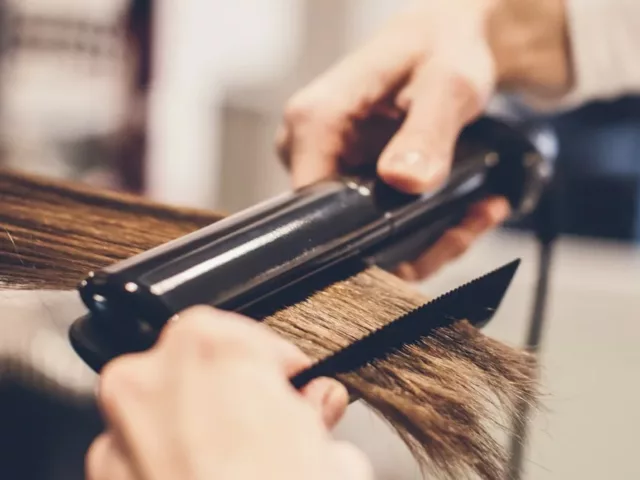
Excessive heat can cause the extensions to become dry, brittle, and prone to breakage. Moreover, if the extensions are bonded to your natural hair using adhesives, heat styling tools can weaken the bonds and cause them to come loose, leading to further damage. That’s the reason why we always recommend you invest in high-quality hair extensions it’s can shield your natural hair from damage caused by frequent use of heat styling tools or chemical treatments.
II. What Type of Extensions Are Less Damaging Hair Extensions?
Hair extensions have come a long way since their early days. With advancements in technology and materials, now, whether you’re looking for temporary, semi or permanent extensions, it’s also possible to find extensions that look and feel natural and are also less damaging to your hair.
Less Damaging Hair Extensions #1: Clip-ins Hair
Clip-ins are considered to be the least damaging type of hair extension because they also have the least permanent installation process. Don’t require any heat or chemical treatments, they are attached to your hair using small clips and can be easily removed without damaging your hair. Unlike other types, all you need to do is simply open the clip, attract it into the hair, and remove it from the root when not in use. Clip-in extensions are a great option if you’re looking for a quick and easy way to add length and volume to your hair without committing to a long-term style. If you are new to this type of hair extension we suggest reading how to install clip-in hair extensions for more details.




Less Damaging Hair Extensions #2: Tape-ins Hair
Tape-in extensions are applied by sandwiching a small section of your natural hair between two tape-backed extension pieces. The tape is specially formulated to be gentle on your hair and scalp and the extensions can be easily removed without damaging your natural hair. They are relatively gentle on your hair, but the tape can cause damage if not removed correctly or if left in for too long. Additionally, tape-in extensions can be difficult to apply and remove without professional assistance. To safely remove tape-in extensions, start by consulting with the professional hair stylist who installed them. If you are performing the takedown process on your own, it’s best to use something like a tape-in extension remover to reduce breakage and make it easier on yourself.

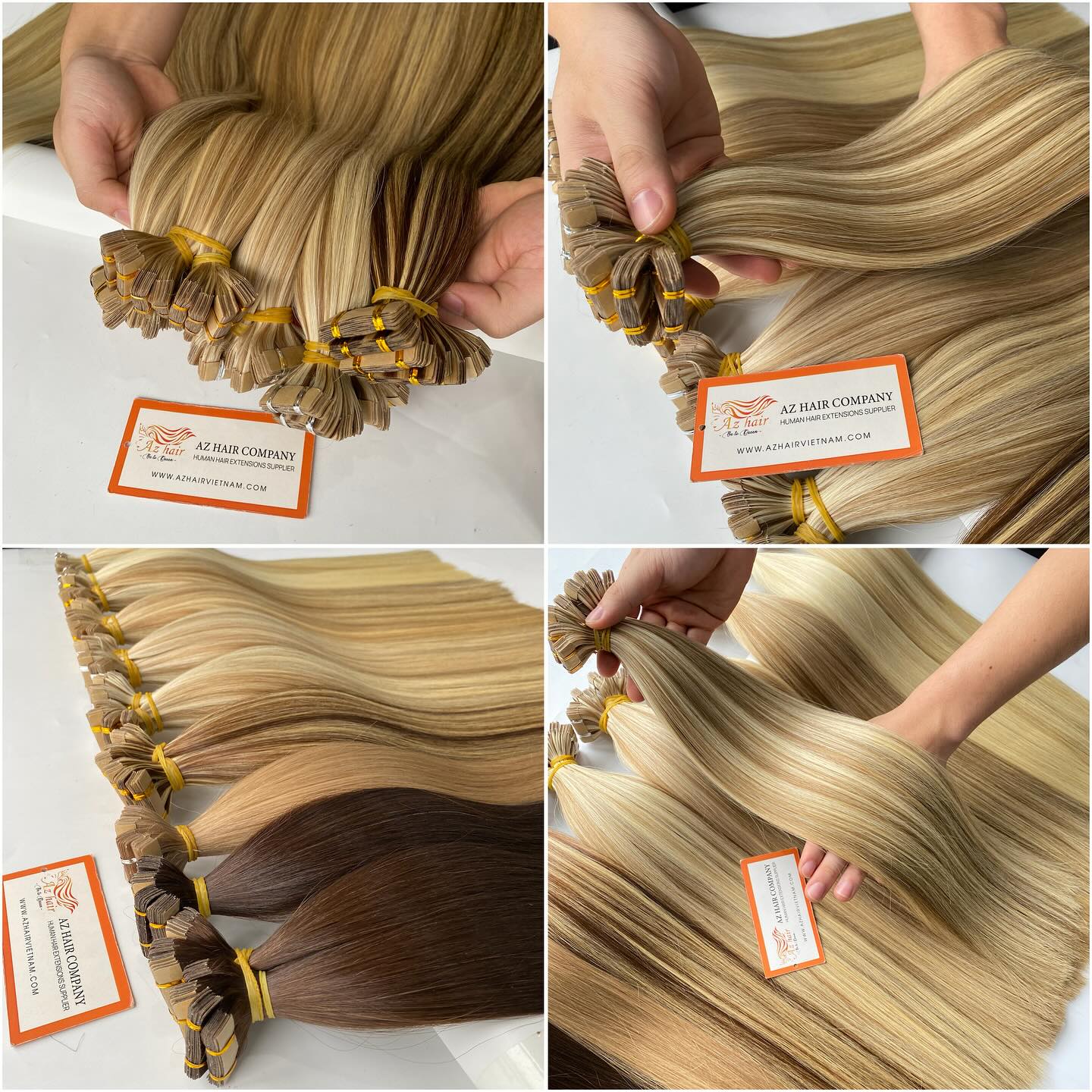
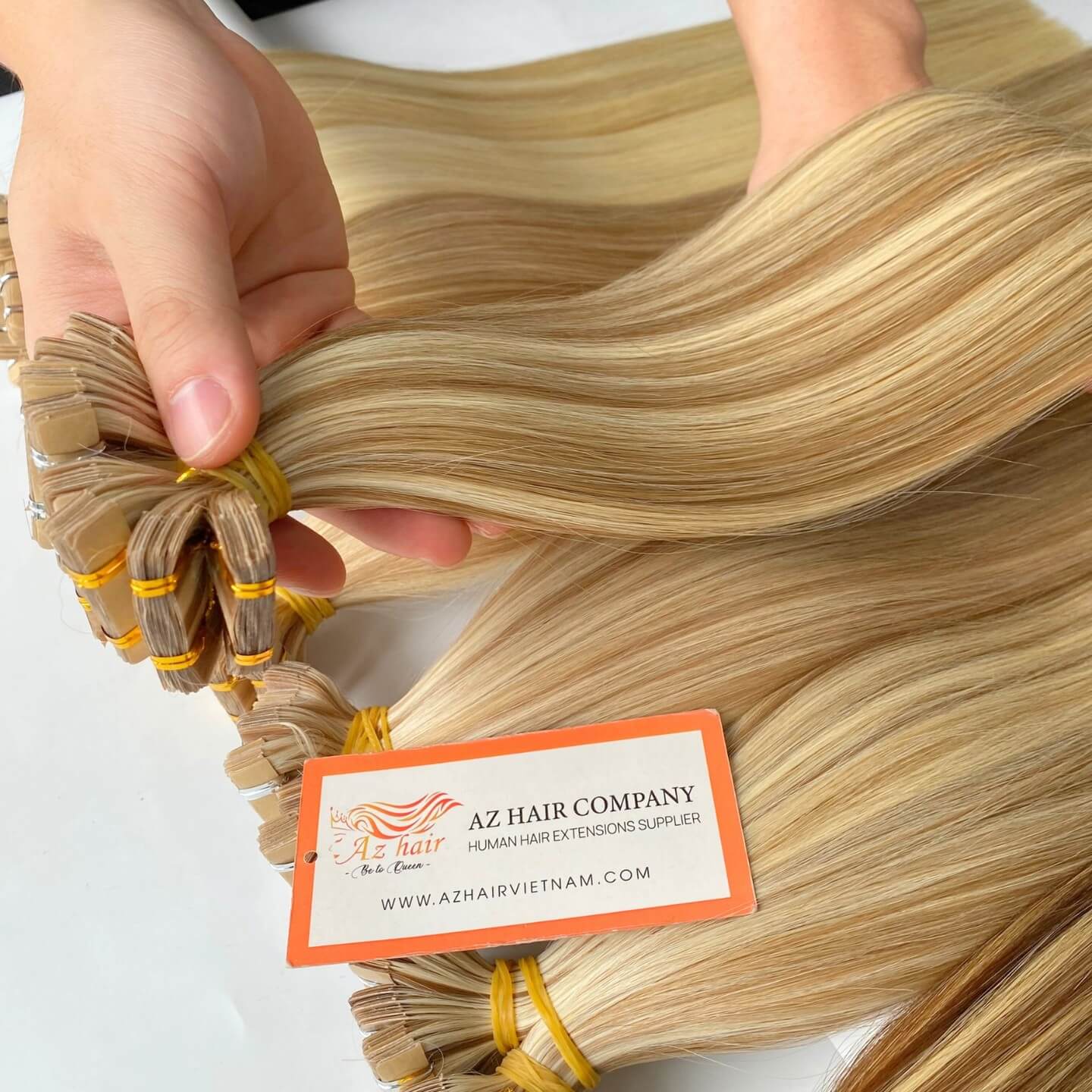

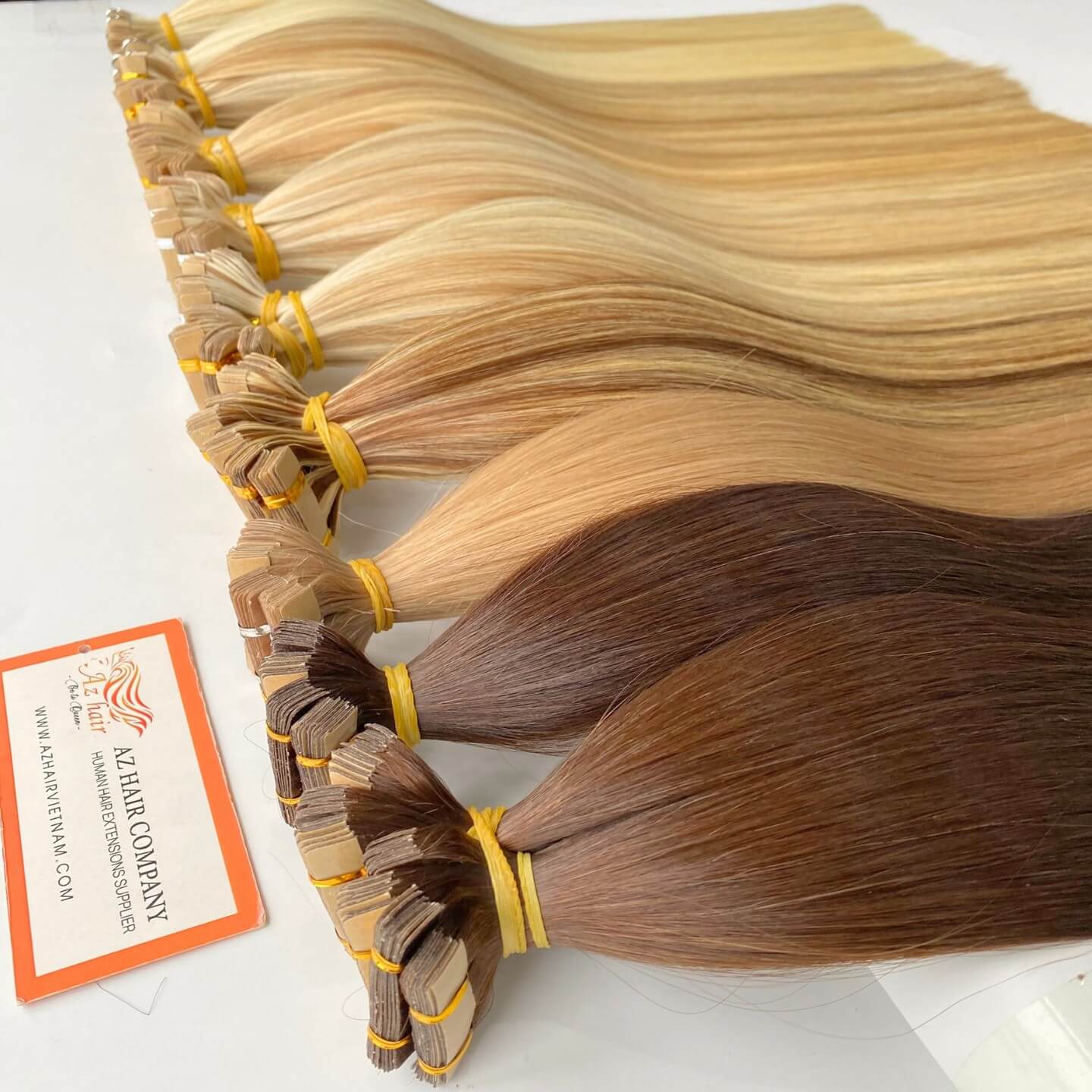

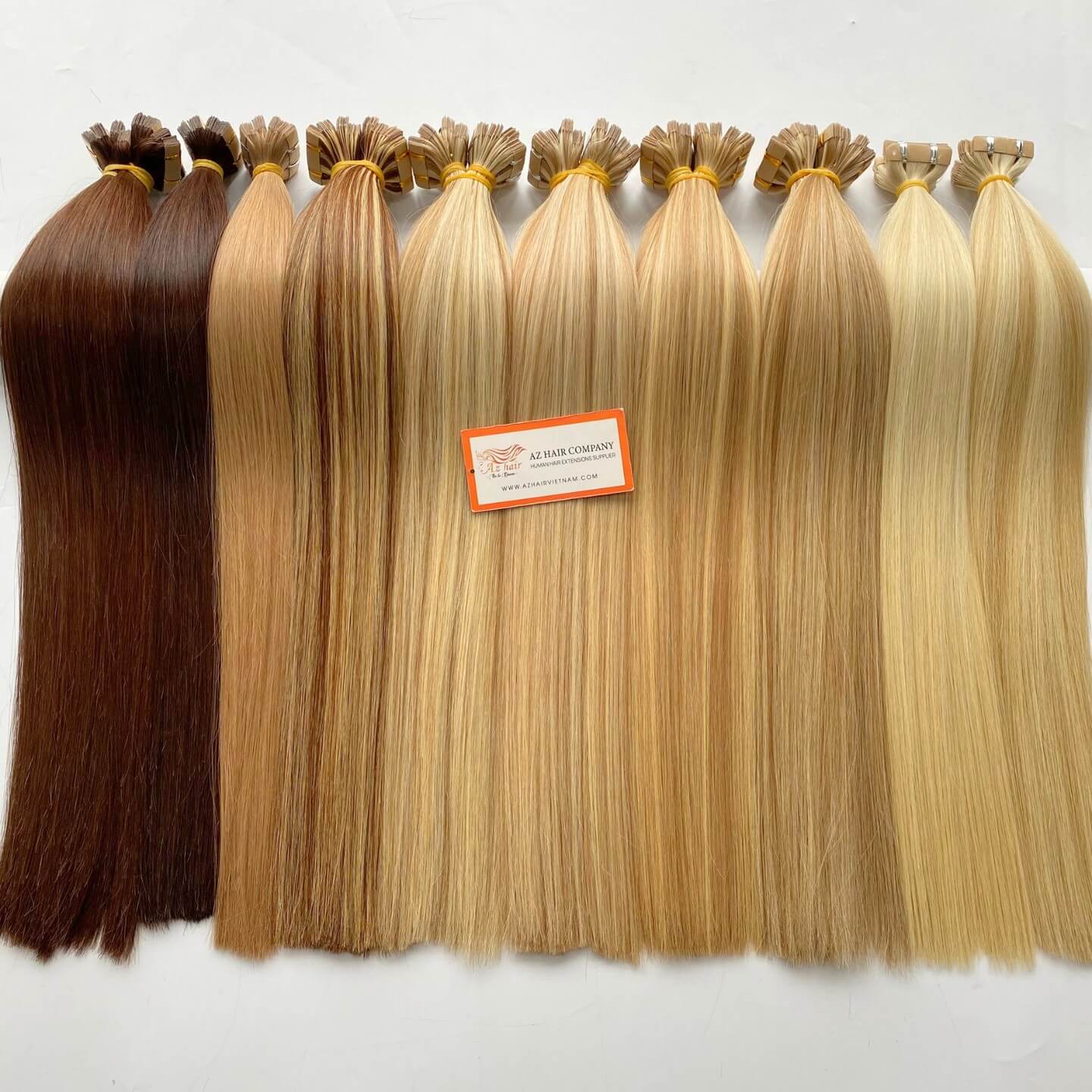
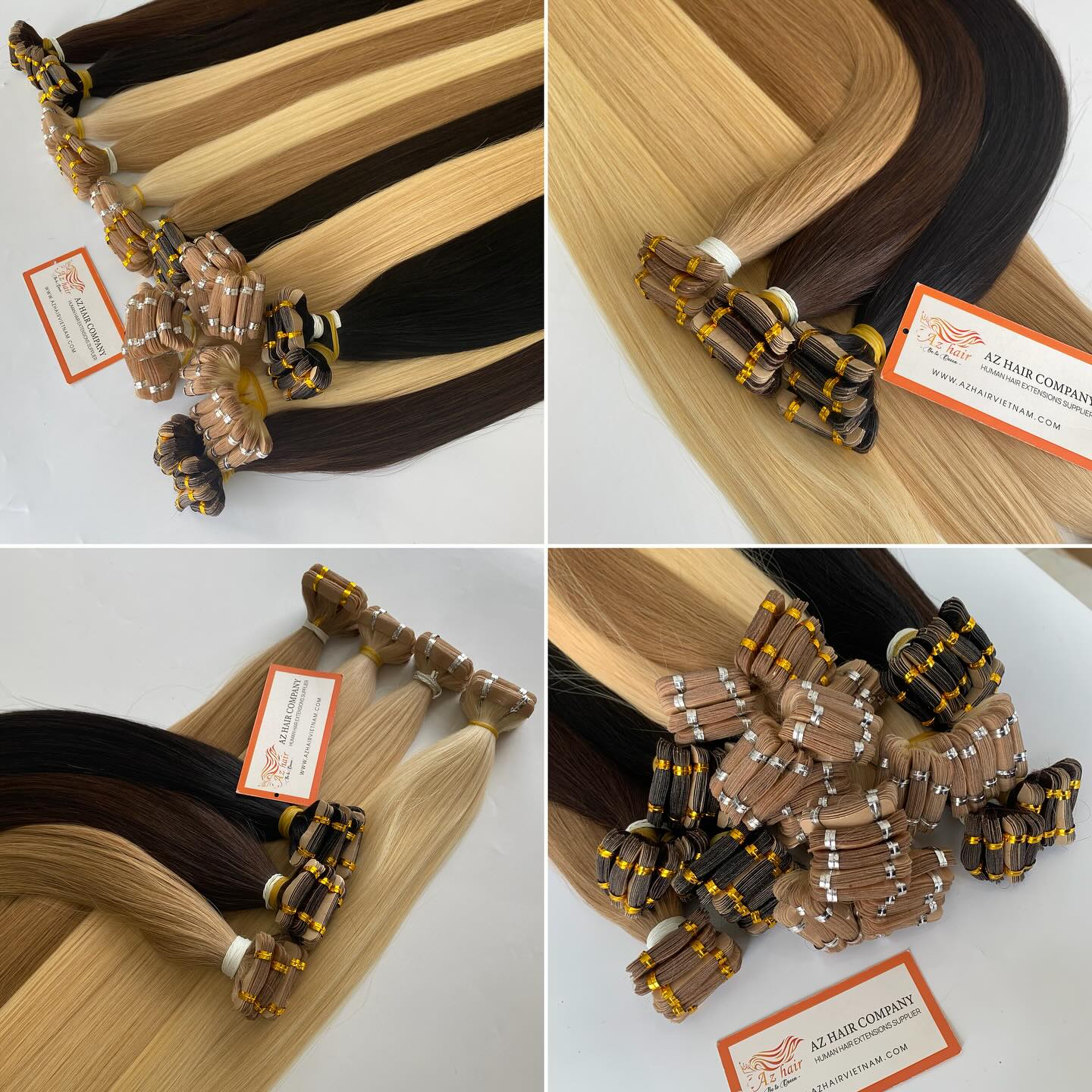
→ Curious about the ways to remove tape in hair extensions? find out the answer now in our dedicated blog: How To Remove AZ Tape In Extensions?
Less Damaging Hair Extensions #3: Nano Ring Hair Extensions
Nano rings are the most discreet hair extension method on the market today! They are perfect for thin-haired customers as they can be placed very close to the front hairline without being seen due to their minute size whilst causing zero damage. They are applied by clamping small sections of your hair onto the extensions using nano rings. However, if not applied or removed correctly, the rings can also cause damage. Wanna find out more about nano ring hair extensions? Read our dedicated blog now: Unveiling the Magic of Nano Ring Hair Extensions
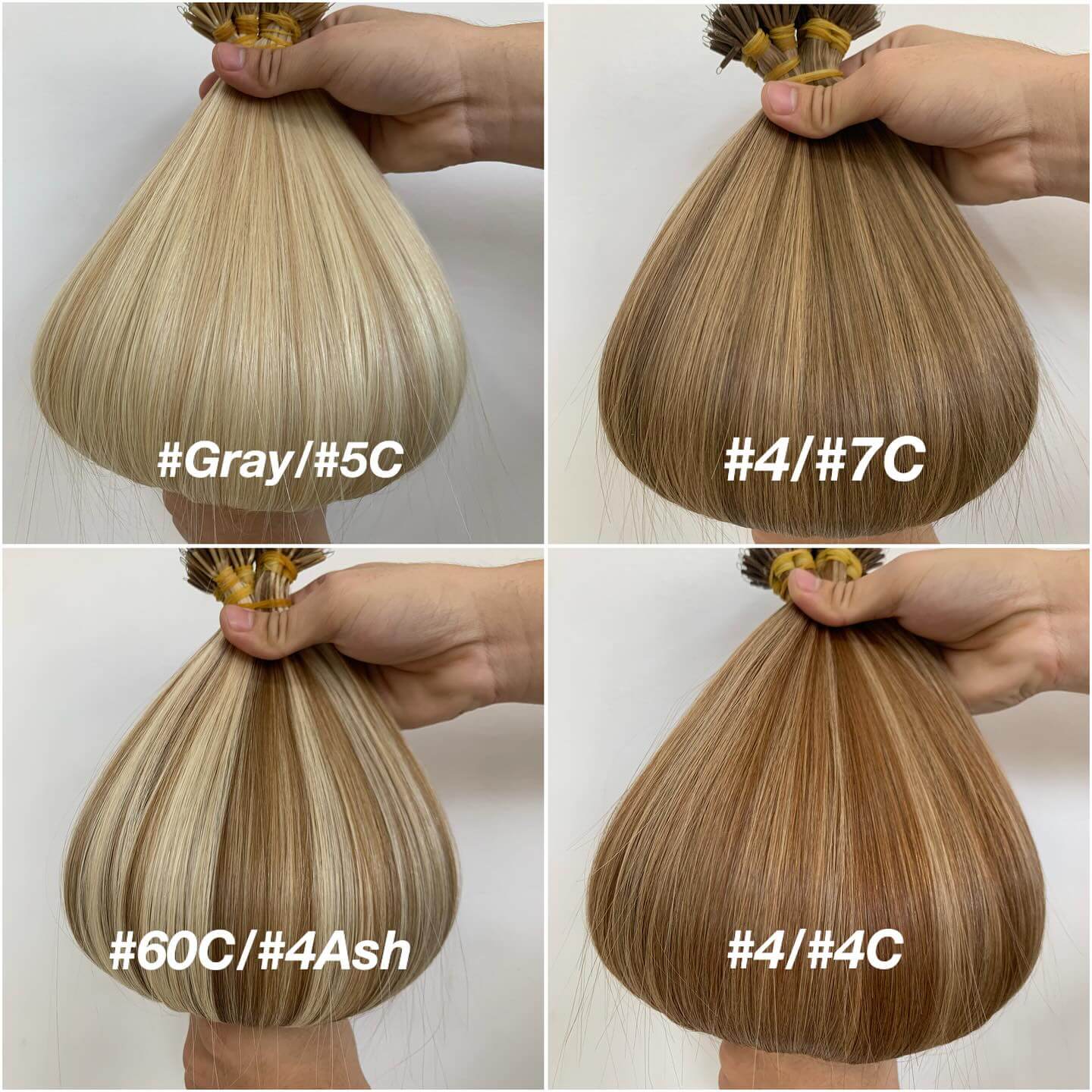



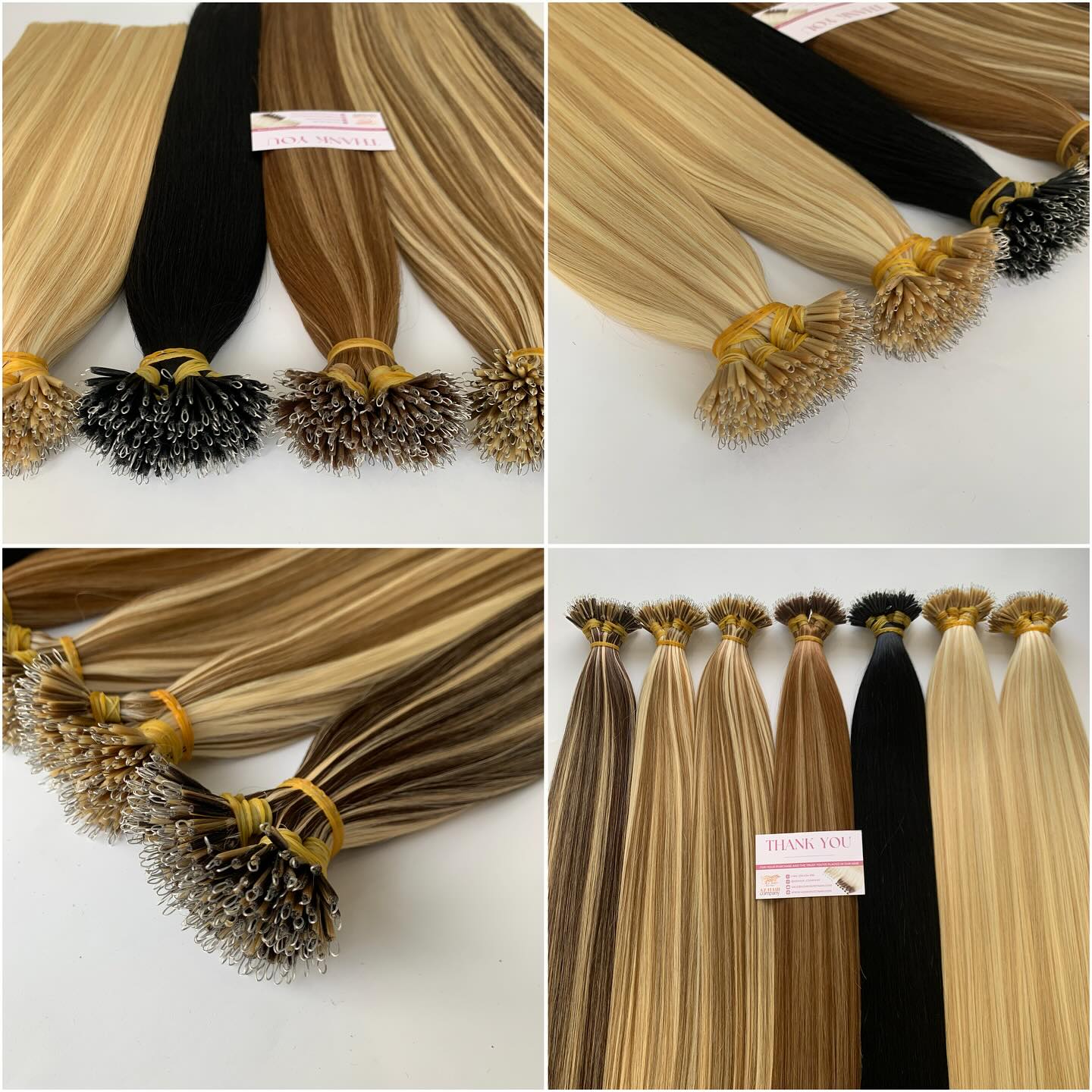
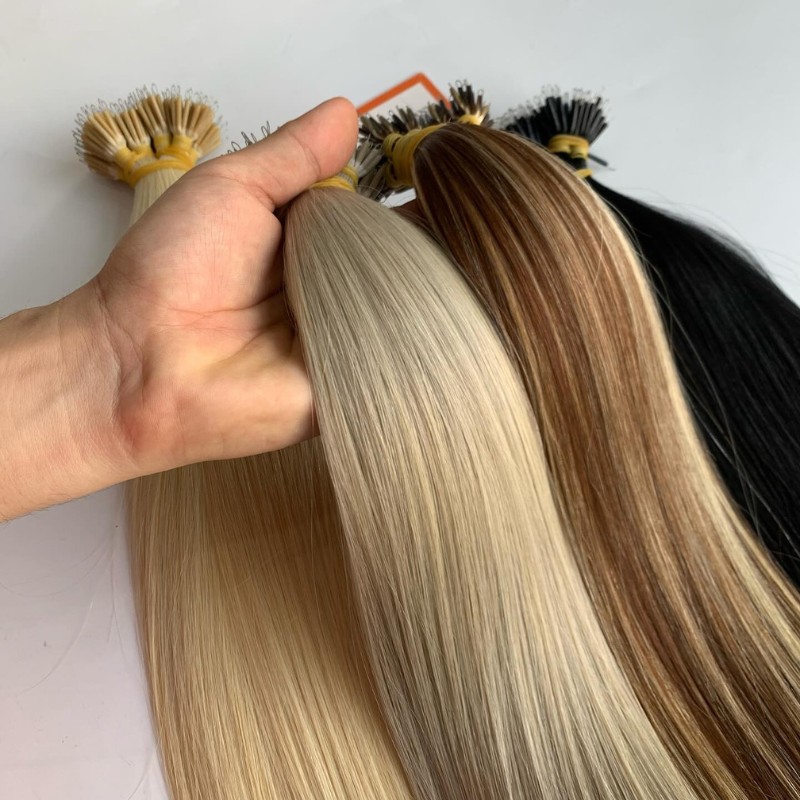

CHECK THIS OUT: How to Remove Nano & Micro Ring Hair Extensions?
Less Damaging Hair Extensions #4: Sew-In Weft
Sew-in extensions are the most versatile hair extension type as they can be used in so many different methods. It can be sewn, weaved, clipped, or glued in to create many looks and styles. It’s also extremely easy and fast to apply and remove and doesn’t require any heat for the application which is great and far less damaging to the hair. They are relatively gentle on your hair and are a fantastic way of adding length to thick hair and are ideal to use when you are transforming a chunky bob into long flowing locks as the thickness of the weft helps to blend out the transition line.
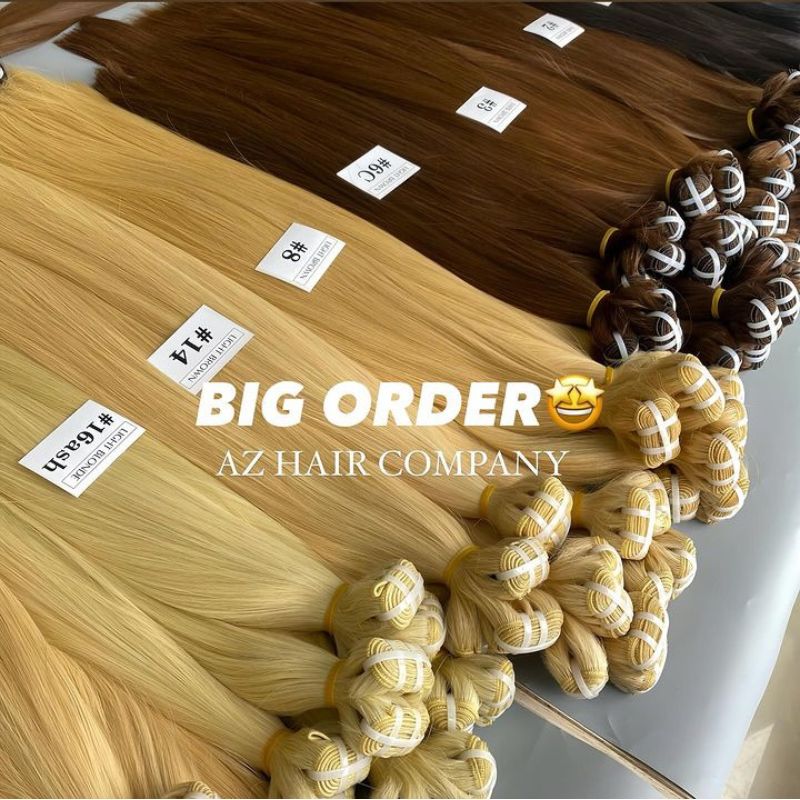
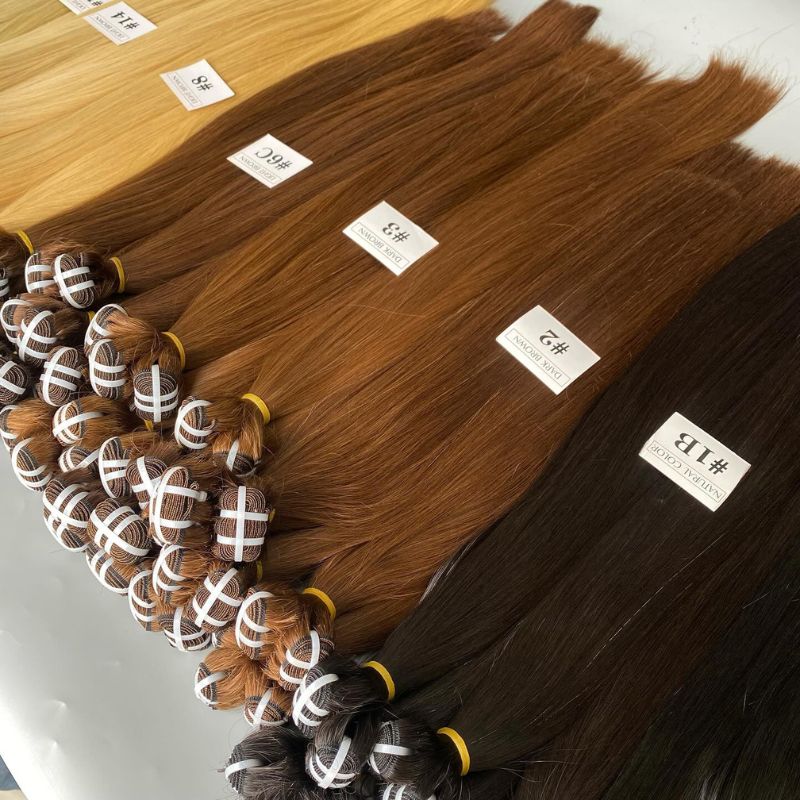


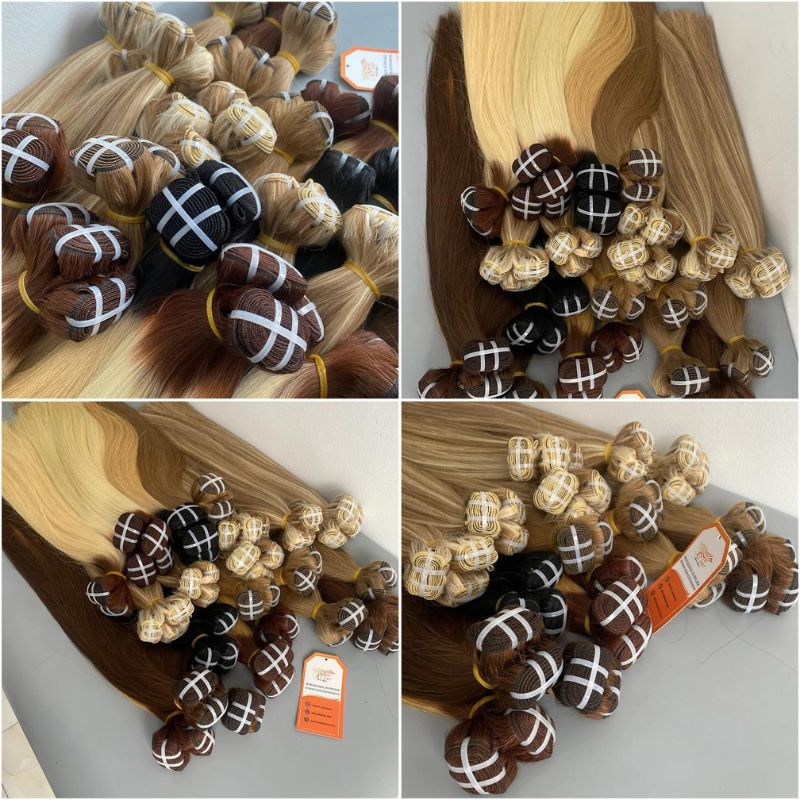

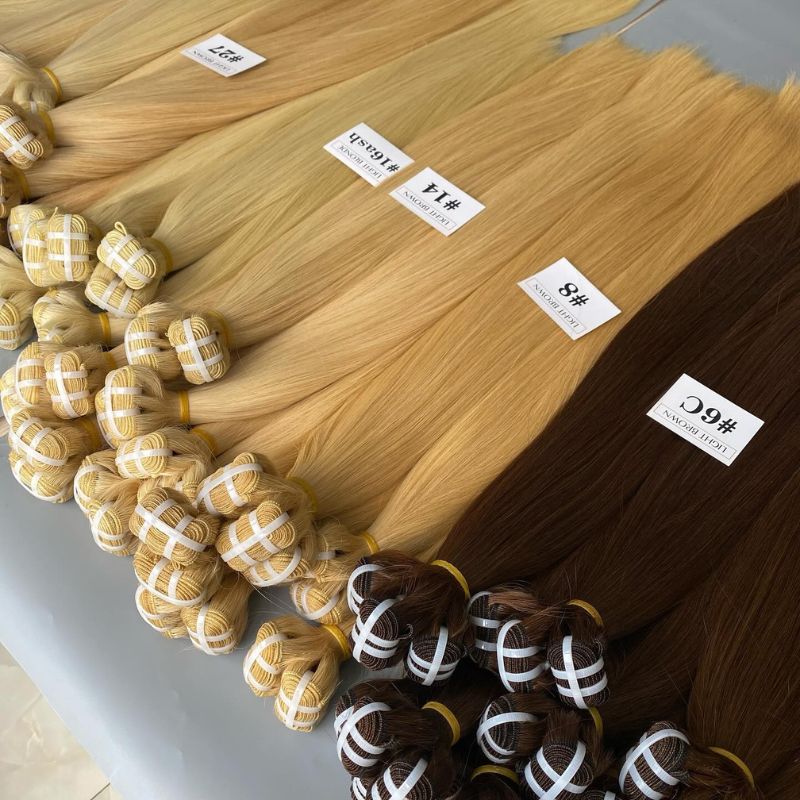
III. How To Choose The Right Least Damaging Hair Extensions?
When choosing hair extensions, it’s important to consider the quality of the hair, the method of attachment, and the length and volume you’re looking for.
- Choose high-quality hair: High-quality extensions are less likely to tangle, shed, and break, and they’ll also look more natural and blend in better with your natural hair.
- Consider the attachment method: Make sure the method you choose is suitable for your hair type and length. For example, tape-in extensions are not recommended for fine or thin hair, while weft extensions may be too heavy for some hair types.
- Consider the length and volume: Make sure the extensions you choose are the right length and volume for your hair. You don’t want extensions that are too long or too thick, as they can put too much strain on your natural hair.
IV. Conclusion
In conclusion, selecting the least damaging hair extensions requires careful consideration of various factors such as hair type, lifestyle, budget, and desired outcome. Remember, consulting with a professional stylist and conducting thorough research are essential steps in ensuring you choose the right hair extensions that enhance your natural beauty while preserving the health of your hair. With the right approach, you can enjoy stunning, long-lasting results without compromising the health of your precious locks.


 BEST SELLING PRODUCTS
BEST SELLING PRODUCTS Wig Hair
Wig Hair WHOLESALE
WHOLESALE Contact us
Contact us Sale Events
Sale Events
